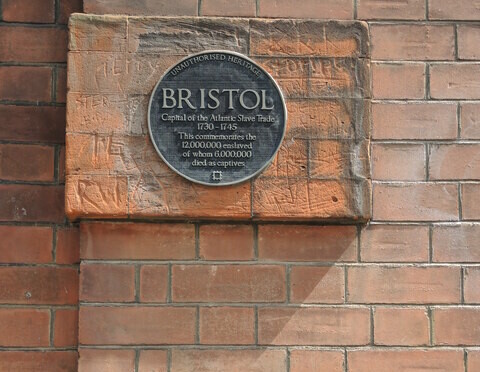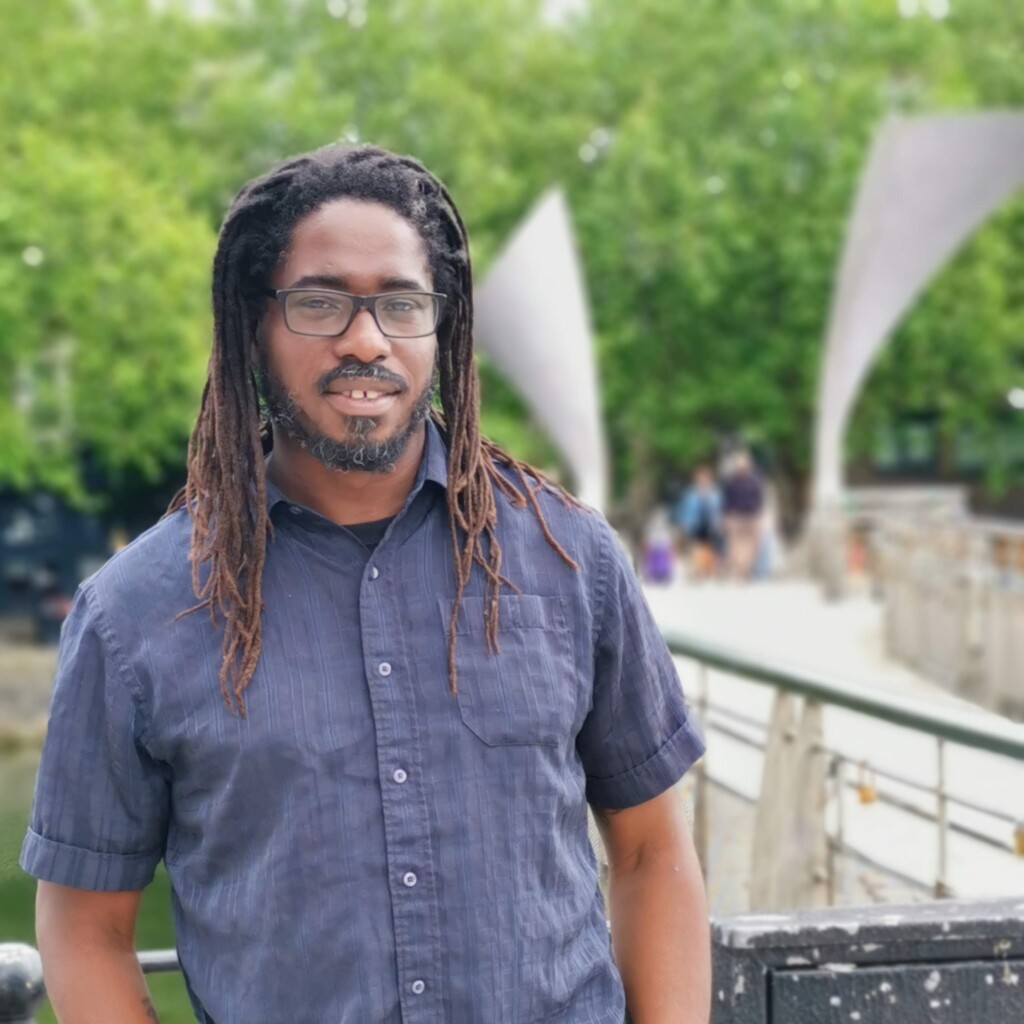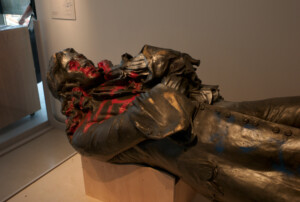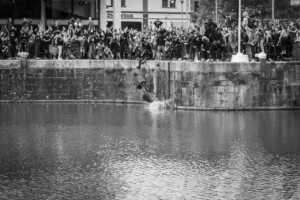Why Bristol Needs to Face Its History to Move Forward

Share this
I grew up in Bath in the 1970s and 1980s. After studying in Newport, I moved to Bristol in 1996. I was drawn to Bristol because of the creative community I found there, especially at Kuumba Centre, the African Caribbean cultural arts space in St Pauls. While on work experience at Black Pyramid Films, I got involved with other projects, including the Bristol Black Writers group. It felt like home and, after graduating, I returned to Bristol and made it so.
As a child, I often came to Bristol with my family, mainly for shopping. It was more affordable than Bath. Later, I’d regularly travel up the A4 with friends for the nightclubs, St Pauls Carnival, and other entertainment, and be back in Bath for daily life. I often observed how, like us Bathonians, tourists would usually stay in Bath, travel to Bristol for the day or night, then retreat back to the Roman city for the remainder of their stay. It was around 2000, when I was working for At-Bristol (now We The Curious), that I saw this begin to reverse, and Bristol started to attract more of its own tourists. They’d visit Bath for the day for sightseeing and then return to the bigger city for more variety.
Bath is proud of its Roman and Georgian history and architecture, and it can take a generation for any innovative planning decisions to be made, as the council’s mind is primarily on the city’s UNESCO status and wants to avoid disruption to the world-renowned landscape. In contrast, when I came to Bristol, so much development was happening. It felt like buildings were being knocked down and modern replacements were rising from the dust before we even realised a planning application had been submitted.
Bath has built its reputation on a confident historical narrative of Romans and Georgians, and this can sometimes feel stifling to residents. Bristol’s lack of a dominant historical narrative makes for more of a patchwork cultural landscape (Brunel, Concorde, music, rebellion, slavery), and its approach to telling its history is often one made up of temporary initiatives, rather than permanent markers, with some notable exceptions. You have two cities – one wedded to the past, and the other seemingly marching into the future.
The use of temporary initiatives is nowhere truer than in how Bristol’s involvement in transatlantic slavery has been dealt with. As the city moved forward, there was tension with those who were demanding the slavery story was told in full. This tension and growing energy convinced the Bristol City Museum to host the ‘A Respectable Trade’ exhibition in 1999, which, for the first time, saw the city get behind telling the story of its slave-trading history. Rob Mitchell and I produced the HTV documentary Under the Bridge about the feelings in the city during that time, and interviewed artist Tony Forbes about his self-portrait, ‘Sold Down the River’, which was commissioned for the exhibition.
Tony told us: ‘I wanted to truthfully address the problems what I went through in Bristol, and I looked at a time when I felt really angry and ashamed with the city on the issue of race … In the painting you see me on a raft floating down a river, with the Colston statue behind me holding me with chains … I’m being dragged under the Suspension Bridge, and you see the silhouette of people dancing on the bridge, councillors, people in the media organisations, whose logos are represented on the sails of the boat, having a party while I’m being dragged into an oblivion.’
Tony’s painting and words managed to articulate what many of the city’s African heritage citizens were feeling – that there had been a wilful neglect from the city leaders to formally acknowledge this history, or to accept the connection with present-day inequalities in society. Visitor numbers exceeded any the museum had experienced before and the exhibition was hailed as a success. A small number of the exhibits, including Tony’s painting, were displayed in the M Shed museum when it opened 12 years later.
Some say the city has never dealt with its slave-trading history, but (even though I’m fearful of being misquoted) I would argue that is not true. In the 24 years since ‘A Respectable Trade’, there have been plenty of funded projects relating to the city’s connection with transatlantic slavery, including exhibitions, films, theatre performances, poetry, talks and panel discussions. However, they have all been temporary initiatives, not permanent, which gives rise to the accusation that the city continually sweeps the topic under the carpet. It’s a fair criticism, and it is this tension of temporary versus permanence, and the frustration of a lack of long-term visibility in acknowledging its slaving past, that in part fuelled the toppling of the Colston statue in 2020. Tony Forbes’ painting unsurprisingly took on extra resonance at that time. We pointed to it, saying, ‘See, this hasn’t come from nowhere, we’ve been trying to say this for at least the past 21 years.’
What will the conversation be in 24 years’ time? 2047 might seem difficult to comprehend, but it feels like just yesterday that Rob and I were interviewing Tony for our film, and in those interim years the conversation feels largely the same: ‘How is the city dealing meaningfully with its slavery history and present-day inequality?’. It is now time to take meaningful action. There are renewed calls for a permanent site in the city where this history can be explored and for enslaved Africans to be commemorated. There are strong signs that the mayoral leadership agrees with the plans, and I will do all I can to support the work. I am reminded of Rob’s provocative words at the end of our documentary, his words still relevant today:
‘So there’s now an exhibition in the city about Bristol and the transatlantic slave trade. It feels like there should be some sort of conclusion at this point, but there’s still too many questions to be asked. So what next? Because this is not the end, but the start of a healing process. But is there such a thing as too much healing? Can the situation ever be cured? Are we just picking a wound and making it worse? Will there ever be a time that we can close this chapter? What more can we do with this history? Because we know we can’t discard it? However we answer these questions, the important thing is that the air is now clearer for us to ask them.’
Naysayers will argue that to build a site dedicated to telling the slavery story is being too wedded to the past, but I disagree. To continue to deny lessons from the past is what will keep us tethered to it, stunted from healthy growth. To confidently acknowledge the history, to take ownership of the ‘warts and all’ narrative (no matter how painful it may be for our modern sensibilities), will be a sign that Bristol is a bold, forward-thinking city, embracing all of the patchwork pieces that make it what it is.
The We Are Bristol History Commission, founded by Mayor Rees after the toppling of the Colston statue, found that people do want to engage meaningfully with the complexities of the city’s history and use this to bring people closer together. This led to initiatives such as Spoken Memories, UWE Bristol’s partner project, and Bridging Histories, the University of Bristol’s project. Both projects have engaged with people across Bristol, finding out what aspects of the city were important in their lives. Regardless of different backgrounds, experiences and social lives, there was a sense of belonging together and a wish to be part of a functioning community in which they could play an active role.
These core shared values on an individual level often get diluted and forgotten in political discourse and policy making, when the majority voice wins through, and it is on such ideals that our sense of modern democracies is founded. This does not (or should not) mean, however, that minority views are meaningless. According to Cornel West (Race Matters,1993), ‘Of course, the aim of a constitutional democracy is to safeguard the rights of the minority and avoid the tyranny of the majority.’
A city that ignores the views of its minority voices is one that lacks a full understanding of the needs of its citizens and their frustrations. Bristol needs to avoid this. The conversations about the city and slavery are largely the same as we were having in 2000, in 2007 (the bicentenary of the abolition act) and in 2020, in the aftermath of the statue toppling. Bristol needs to move beyond the cycle of accusations of inaction, face its history and move forward. It is new conversations such as this that the History Commission have been facilitating.
Although Bath has a confident heritage narrative, it too has problems dealing with its slavery connections. Bath became a famous and wealthy city as the place where merchants and the aristocracy spent their money on leisure and entertainment, the Las Vegas of the South West. The heavy lifting and work went on in Bristol and other port cities, and on the plantations in the Caribbean and Americas. Before Bristol grew prosperous as a port city, Bath was not the wealthy city it eventually became. The two cities have stronger historical ties than either care to admit.
I am fortunate in that I write and have a platform where I can be heard. I try to use these positions to present and discuss some of the views of the people that I know who do not have the same access. I cannot guarantee that people are listening, but I can document these views. As a son of both cities – a child of one and a citizen of the other – I want to be fully seen and heard, as I know we all do.

Shawn-Naphtali Sobers is Professor of Cultural Interdisciplinary Practice at University of the West of England (UWE Bristol). His work includes projects on legacies of slavery in Bristol, Bath, and Nottinghamshire; African presence in Georgian and Victorian Britain; disability and walking; Rastafari language and culture; and creative citizenship in social media.
This article appears in Bristol 650: Essays on the Future of Bristol, a book bringing together essays from over 30 contributors, addressing some of the challenges the city faces and sharing ideas about how we might meet them. From dealing with the past, the future of social care, culture and housing to building a city of aspiration, the book looks to promote learning about the future of Bristol and encourage new ideas to come forward.
Free copies of Bristol 650: Essays on the Future of Bristol will be available at selected Festival of the Future City events in October 2023, or you can find articles featured in the book at bristolideas.co.uk/bristol650book.

